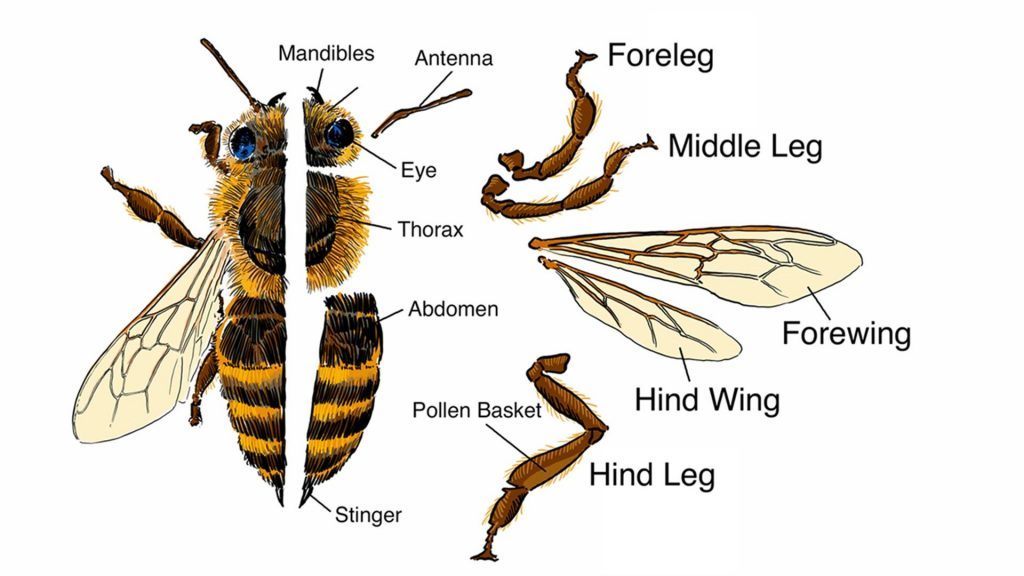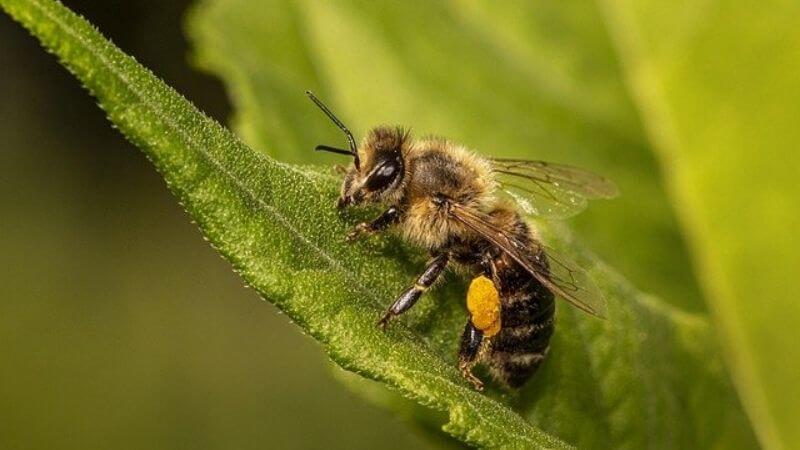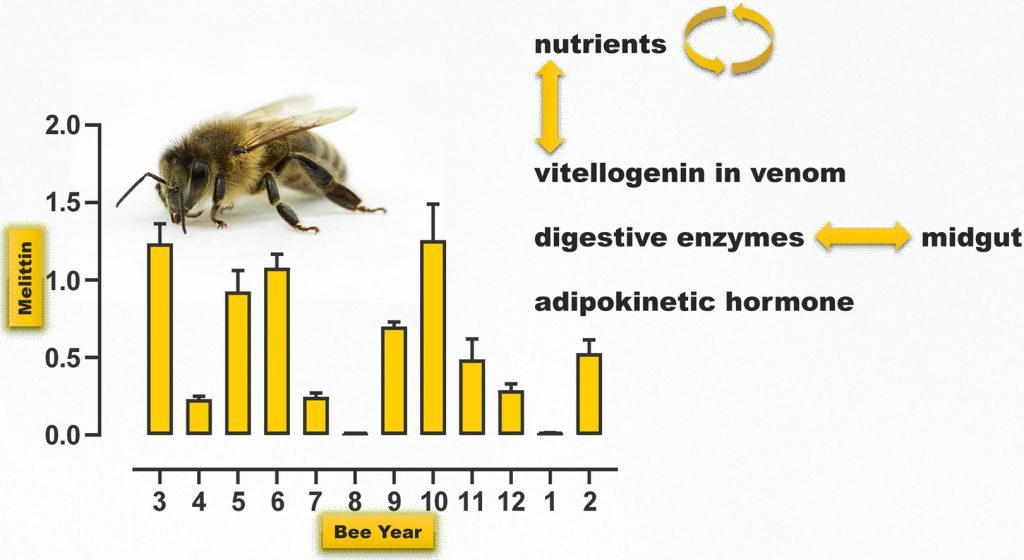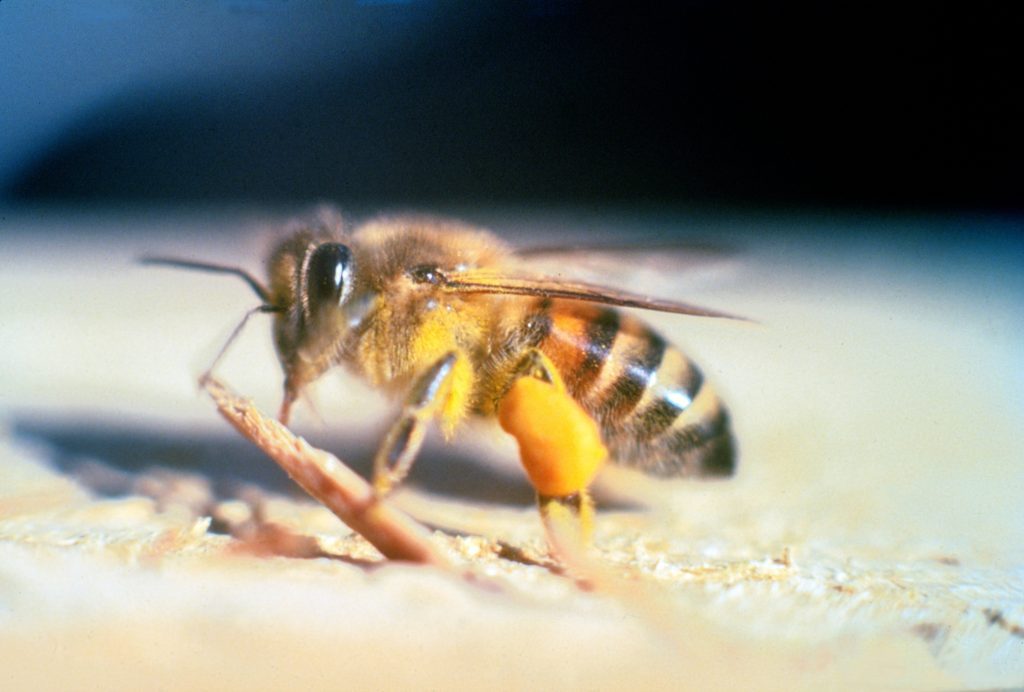In the intricate tapestry of the natural world, every creature, no matter how small, plays a crucial role in maintaining the delicate balance of ecosystems. Among these industrious contributors is the humble bee, a tiny marvel that buzzes through our gardens and fields, largely unnoticed in its daily endeavors. Have you ever paused to wonder about the weight of these tiny pollinators? “How Much Does a Bee Weigh?” may seem like a simple question, but its answer unveils a fascinating journey into the world of bees and the vital functions they perform. Join us as we delve into the weighty matter of bees and discover the significance behind their seemingly lightweight presence in our environment.
Bee Anatomy and Structure

Head
The head of a bee is equipped with important sensory organs and structures. Two segmented antennae play a vital role in environmental perception, particularly in detecting chemicals and pheromones. Honey bee also have large compound eyes, affording them a broad field of vision for navigation and locating flowers.
Thorax
The thorax, divided into prothorax, mesothorax, and metathorax, houses crucial components for bee movement. Each segment supports a pair of legs, adapted for various functions such as collecting pollen, grooming, and carrying materials. Queen bee have four wings arranged in two pairs, with the forewings being larger than the hindwings.
Abdomen
The abdomen, consisting of multiple segments, is home to vital organs. Female worker bees and queens possess a modified ovipositor, which doubles as a stinger for defense and is equipped with venom glands.
Mouthparts
Bees have specialized mouthparts for various tasks. Strong mandibles are essential for collecting and manipulating pollen, constructing the hive, royal jelly and defending the colony. They also possess a proboscis, or tongue, used for feeding on nectar from flowers.
Digestive System
The digestive system of bees includes a crop or honey stomach for temporary nectar storage before processing into honey. The midgut facilitates digestion and nutrient absorption, while the hindgut handles the final stages of digestion and excretion.
Respiratory System
Honey bee apis mellifera employ a network of tracheal tubes for respiration, delivering oxygen directly to cells. This tracheal system is separate from the circulatory system.
Circulatory System
Bees have an open circulatory system where hemolymph, their blood equivalent, bathes organs directly. The heart pumps hemolymph into the body cavity, facilitating nutrient distribution.
Reproductive System
Bee colonies consist of different castes, including queens, workers, and drones. The queen, a reproductive female, possesses well-developed ovaries. Drones, the male bee hives, have testes, while workers also have ovaries, typically less developed than those of the queen. Understanding the reproductive system is crucial for comprehending the intricate social structure within a bee colony.
Factors Influencing Bee Weight

The weight of bees can be influenced by various factors, and it’s important to note that different species of bee colony may respond differently to these factors. Here are some factors that can influence bee weight:
Species and Age
- Different species of bees have different sizes and weights. For example, honeybees (Apis mellifera) have different weight characteristics compared to bumblebees or solitary bees.
- The age of the bee can also impact its weight. Younger bees may be smaller and lighter than older, more mature bees.
Nutrition
- The availability and quality of food sources play a crucial role in determining bee weight. Bees require a balanced diet with access to nectar, pollen, and water to maintain optimal health and weight.
- Adequate nutrition during the larval stage is essential for the development of healthy adult bees.
Environmental Conditions
- Temperature and weather conditions can affect bee activity and metabolism. Swarm of bees may need to expend more energy to regulate their body temperature in extreme conditions.
- Harsh weather conditions, such as cold temperatures or heavy rainfall, can limit foraging opportunities and impact the availability of food resources.
Parasites and Diseases
- Parasites, such as Varroa mites in honeybee colonies, can weaken bee insect and impact their weight. Infestations can lead to decreased foraging activity and overall vitality.
- Diseases, including viral infections, can also affect the health and weight of bees.
Pesticide Exposure
Exposure to pesticides, especially neonicotinoids and other bee-harming chemicals, can have adverse effects on bee health. Pesticides may impact foraging behavior, disrupt navigation, different bees and affect the overall fitness of the colony.
Colony Health and Queen Quality
- The overall health of the bee colony, including the presence of a healthy queen and the quality of brood care, can influence the development and weight of individual bees.
Genetics
- Genetic factors within a bee population can contribute to variations in size and weight. Breeding programs may influence certain traits, including weight, for desired characteristics.
Seasonal Variations
- Bees may experience fluctuations in weight based on the season. For example, honeybees tend to build up stores of honey in preparation for winter, bees and honey and this can influence their weight.
Also, Read More: Health Benefits of Banana Peppers
Weight Discrepancies Among Bee Species

Bee species vary in size and weight, and there can be significant differences among them. Here are some general points about weight discrepancies among bee species:
Size Variation
Bees come in various sizes, ranging from tiny stingless bees that are only a few millimeters long to larger bumblebees and carpenter bee food. Size is not always directly proportional to weight, as the structure and composition of the bee can also play a role.
Differences in Body Types
Different bee species have different body types, and this affects their weight. For example, some royal jelly honey bee have robust and bulky bodies, while others are more slender.
Roles within the Colony
The weight of bees can also be influenced by their roles within the colony. For instance, worker bees are generally smaller and lighter than queen honey bee hive or drones. The queen bee tends to be the largest bee in the colony.
Foraging Habits
Bees that are specialized pollinators for certain types of flowers may have adaptations that affect their weight. For example, some bees are equipped to collect pollen in specialized structures on their bodies.
Species-Specific Characteristics
Each bee nest species has evolved specific characteristics to adapt to its environment and fulfill its ecological role. These characteristics, including weight, can vary greatly between species.
Bumblebee Size and Weight
Bumblebees, a commonly known group of bees, can exhibit a wide range of sizes. The largest bumblebees are generally queens, which are larger and heavier than the worker queen bee honey.
Solitary Bees vs. Social Bees
Solitary bee species may exhibit different weight characteristics compared to social bees. Solitary bees, which do not live in colonies, may have different adaptations based on their solitary lifestyle.
Stingless Bees
Stingless bees, found in tropical regions, are generally smaller than honeybees but can still vary in size among species.
Measurement Techniques

Measuring various aspects of bees and their behavior is essential for researchers and beekeepers to understand and manage bee populations effectively. Here are some common techniques for measuring different aspects of bees:
Counting Bee Population
Visual Inspection: Beekeepers often perform visual inspections of hives to estimate the number of bees present. This can be done by observing the frames and counting the bee keep on them.
Weighing Hives: Sensitive scales placed under beehives can be used to measure changes in hive weight, providing an indirect measure of bee population.
Foraging Behavior
Pollen Analysis: By collecting pollen from foraging black bee honey, researchers can analyze its composition to understand the plants bees visit and their foraging preferences.
Mark and Recapture: Bees can be marked with colored powders or tiny tags and then released. After a period, recaptures can be counted to estimate foraging ranges and activity.
Bee Movement and Navigation
Radio Frequency Identification (RFID): RFID tags can be attached to bees, allowing researchers to track individual bee movements and study their behavior within the hive or during foraging.
Optical Tracking Systems: High-speed cameras and computer vision can be used to track the movements of individual worker bee within a hive or during experiments.
Hive Temperature and Humidity
Thermography: Thermal imaging can be used to monitor the temperature distribution within a beehive, providing insights into the hive’s health and activity.
Humidity Sensors: Measuring humidity levels within the hive can be crucial for understanding bee behavior and hive conditions.
Communication and Dance Language
Observational Studies: Researchers often observe and document bee communication through dances, which convey information about the location of food sources.
Video Recording: Recording bee dances and jelly royal analyzing them later helps researchers decode the information being communicated.
Health Monitoring
Varroa Mite Monitoring: Varroa mites are a significant threat to bee colonies. Various methods, such as sticky boards or alcohol washes, are used to monitor mite infestations.
Pathogen Analysis: PCR and other molecular techniques can be employed to identify and quantify pathogens within bee colonies.
Nectar Collection and Honey Production
Weight Gain Measurement: Weighing hives over time allows beekeepers to estimate honey production.
Nectar Sugar Content: Researchers can collect nectar samples to measure sugar content and understand the quality of nectar available to bees.
Average Weight of a Bee
| Bee Type | Average Weight (milligrams) |
|---|---|
| Honeybee (Apis mellifera) | 80 mg |
| Bumblebee | 150 mg |
| Carpenter Bee | 200 mg |
| Mason Bee | 20 mg |
The average weight of a bee can vary depending on the species. Generally, honeybees, which are commonly encountered in beekeeping and are crucial for pollination and apis mellifera honey production, have an average weight ranging from about 0.1 to 0.2 grams. Keep in mind that this is just an average, and individual bees within a colony may vary in weight. Other bee species may have different average weights.
Conclusion
The weight of a bee is a dynamic aspect intricately linked to its species, role within the colony, and individual attributes. The figures provided offer a glimpse into the general weight ranges of bees, yet the intricacies of bee biology warrant continued scientific exploration. Understanding the weight of bees contributes not only to our knowledge of their physiology but also underscores their significance as pollinators in maintaining biodiversity and different kinds of bees ecological balance. As these remarkable insects continue to play a vital role in ecosystems worldwide, ongoing research into their diverse characteristics remains essential.
Frequently Asked Questions (FAQ)
Q: How much does a bumblebee weigh compared to a honeybee?
Ans: Bumblebees are generally larger than honeybees, and their weight can vary between 0.2 and 1 gram.
Q: Do different bee species have significantly different weights?
Ans: Yes, various bee species exhibit a range of weights. Some can be smaller or larger than the average honeybee.
Q: How does the weight of a bee change during its lifespan?
Ans: A bee’s weight fluctuates throughout its life stages. Newly emerged bees are lighter, and their weight increases as they age and engage in foraging activities.
Q: What role does weight play in a bee colony?
Ans: Weight is crucial for foraging efficiency and navigation. Bees need to carry nectar, pollen, and water back to the hive, and their weight influences their ability to fly and contribute to the colony.
Q: Can environmental factors affect the weight of bees?
Ans: Yes, factors such as seasonal changes, availability of food sources, and exposure to pesticides can impact a bee’s weight. Environmental stressors may affect foraging success and overall colony health.ntial.



